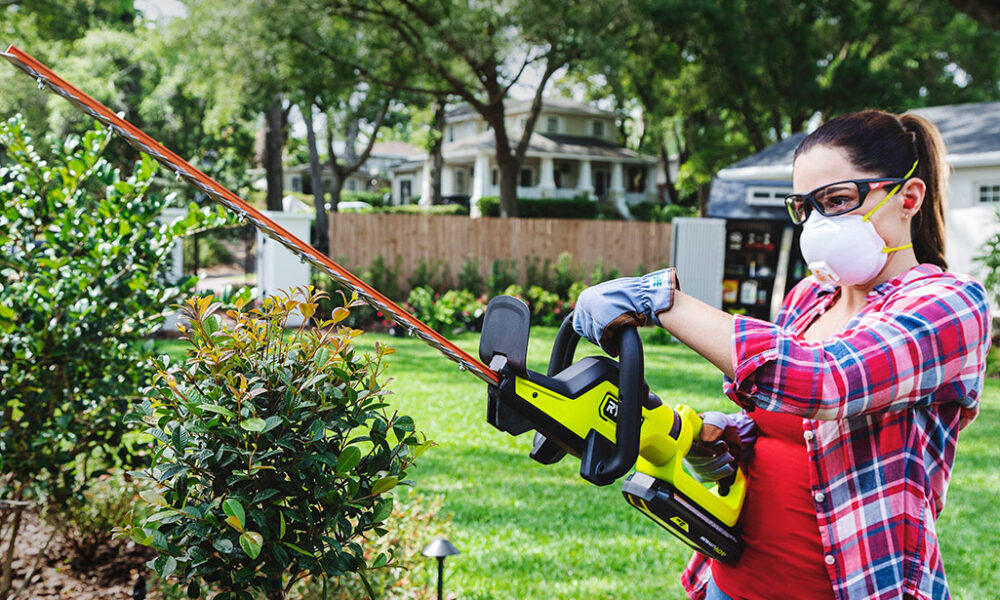How Outdoor Power Tools Changed the Way We Maintain Big Yards

From push‑mower blisters to robot mowers on autopilot, today’s outdoor power tools let you tame acreage in hours—without wrecking your back or the planet.
The Evolution of Yard Work: From Manual Labor to Modern Machines
Life Before Power Tools
- All muscle, no motor. Rakes, hand saws, and scythes ruled yard work. A single Saturday of yard work meant miles of grass raked and piles of blisters.
- Weather setbacks. Rain turned clippings into heavy mats; extreme temperatures froze or scorched the soil, making digging brutal.
- Size limits. A two‑acre lawn took days to finish. Older homeowners or anyone with limited mobility often hired help—or let weeds win.
- Zero emissions, but zero efficiency. Manual tools made no noise pollution, yet the significant amount of time lost could never be reclaimed.
What Triggered the Power Tool Revolution
- Gas powered tools arrive. Post‑WWII engines shrank, birthing the first gas mower, chain saws, and commercial leaf blower prototypes. Suddenly, cutting an acre of grass became a one‑hour job.
- Battery boom. In the 2010s, advanced lithium ion batteries delivered enough power and battery capacity for leaf blowers, string trimmers, and electric push lawn mowers.
- Regulation pressure. The California Air Resources Board pushed to slash greenhouse gas emissions, accelerating the shift to battery powered lawn tools and other electric equipment.
- Ergonomics & environment. Lighter builds, fewer spark plug replacements, no oil changes, and far less maintenance made battery powered equipment attractive. Consumer Reports now rates many electric mowers higher than mid‑tier gas models for large‑yard lawn care.
- One‑brand ecosystems. STIHL, EGO, and others launched battery powered products that share packs across multiple lawn tools, cutting costs and storage clutter.
Result? Big‑yard owners swapped rake marathons for battery powered tools that finish chores before the next power outage warning—and they save money on fuel while doing it.
Game‑Changing Tools and What They Do Better
Wood Chippers, Log Splitters, and Stump Grinders
- One pass, three wins. Feed tree branches into a chipper, dump the chips on garden beds, then send the larger logs through a log splitter for winter fuel.
- Back‑saver. A 25‑ton splitter turns larger logs into stove‑ready pieces in seconds—no spark plug tug‑of‑war, no axes.
- Budget bump. Renting outdoor power equipment like a 6″ chipper for $150/day beats two dump runs plus landfill fees.
- Battery future. Greenworks now pilots battery powered models under 10 inches, pairing high battery capacity with low noise—great for HOA‑sensitive outdoor spaces.
Leaf Blowers, String Trimmers, and Edgers
- Leaf blowers (especially commercial leaf blower backpacks) clear an acre in 30 minutes—try that with a leaf rake.
- String trimmer snaps weeds where lawn mowers can’t reach and a motorized edger draws clean sidewalk lines for instant curb appeal.
- Battery powered lawn tools replace messy gas tools; no fumes, less noise pollution, and the California Air Resources Board loves the drop in greenhouse gas emissions.
Robotic and Battery‑Powered Mowers
- Set‑and‑forget. A WORX Landroid maps your lawn size, mows nightly, and mulches clippings to feed grass seed.
- Zero‑turn riding mowers still rule rugged acreage, but high‑end electric mowers with swappable packs bring self propelled convenience to ½–2 acre lots.
- Battery powered tools mean no gas equipment, no spark plug replacements, and far less maintenance.
Multi‑Tool Systems and Interchangeable Batteries
- One brand, many jobs. Milwaukee M18 QUIK‑LOK or EGO Power+ share 56 V packs across trimmer, pole saw, and leaf blowers.
- Save storage. A single powerhead plus four attachments fits where two old gas powered models used to sit.
- Optimal performance. Consistent voltage and smart chips balance battery technology, squeezing more power from today’s lithium‑ion batteries.
Pressure Washers and Brush Cutters
- Blitz the grime. 3,000 PSI washers refresh decks, fences, and driveway concrete; adjustable nozzles dial back for flower beds.
- Brush cutters rip through thorn thickets or waist‑high weeds where riding mowers bog down.
- Electric lawn equipment versions cut out engine oil changes and start instantly—even after a long power outage.
Bottom line: each of these tools slashes chore time while today’s battery powered tools keep hands clean, ears happy, and yards in top shape.
Why It’s Easier, Safer, and Smarter Today
Efficiency and Speed on Big Yards
Modern battery powered tools chew through acreage fast:
- A 56 V leaf blower clears a quarter‑acre patio in eight minutes—what once took an hour with a leaf rake.
- Wide‑deck lawn mowers finish two acres on one high‑density battery thanks to smarter battery technology and higher battery capacity.
- Brushless motors deliver more power with less maintenance; no spark plug fouling or mid‑mow gas top‑offs.
- GPS‑guided riding mowers cut in fewer passes, slashing fuel and time while keeping rows laser straight.
Ergonomic Designs and Safety Improvements
- Electric lawn equipment is 30 – 40 % lighter than comparable gas tools. Your back feels that on a hot day.
- Anti‑vibration handles, self‑propelled drive, and balanced weight mean you cut weekly chores with far less physical effort.
- Enhanced safety gear—integrated chain brakes, kick‑back sensors, vented chaps, wrap‑around goggles—meets or beats manufacturer’s guidelines for safe operation.
- Tough, durable materials extend life even under extreme temperatures; follow manufacturer recommendations for optimal performance.
Sustainability and Noise Reduction
- Battery powered and other electric tools run almost silent, trimming neighborhood noise pollution by up to 70 dB.
- Zero‑tailpipe emissions cut greenhouse gas emissions; the California Air Resources Board points to handheld outdoor power equipment as a leading gas‑equipment polluter now being phased out.
- Pair electric mowers with rooftop solar for an environmentally friendly power source—free “fuel” after the sun comes up.
- Ongoing advances in lithium‑ion batteries and higher energy density packs give you enough power for full‑yard runs, even with electric push models.
Power Tool Buying vs. Renting for Large Properties
When to Rent Heavy Equipment
- Stump grinders, 12‑inch wood chippers, and 35‑ton log splitters sit idle 90 % of the year—rent them and save money.
- Rental yards keep blades sharp and perform regular maintenance; you avoid storage headaches and surprise product management costs.
- Great choice if you only tackle fallen trees after a storm or do annual landscape resets.
When It’s Worth Buying
- High‑cycle lawn tools—battery powered lawn tools like string trimmers, leaf blowers, and daily‑driver lawn mowers—pay for themselves in one season of big‑yard lawn care.
- Go for multi‑tool systems with one battery that snaps into five different tools; one charger, one shelf, lower upfront cost, and seamless battery powered products expansion.
- For estates with heavy snow blowers or year‑round outdoor spaces, ownership guarantees availability during a holiday power outage or tight rental market.
Bottom line: match usage to investment. Rent the giants, own the daily drivers, and let today’s quiet, clean battery powered equipment shoulder the work.
Summary: What It Means for Modern Homeowners
Big Yards, Small Workload
Thanks to today’s battery powered tools and smarter electric equipment, even two‑acre properties feel manageable. You cut, clean, split, and grind in a single afternoon—burning less gas, swapping one battery between multiple heads, and logging far fewer hours behind loud gas powered models. The result?
- Dramatically fewer service calls for mowing or debris hauling.
- Noticeably lower annual landscape maintenance bills.
- A quieter yard with reduced noise pollution and slimmer carbon footprint, a win applauded by the California Air Resources Board.
Quick Takeaways
✅ Invest in a handful of high‑use lawn tools—think self‑propelled lawn mowers, cordless leaf blowers, and a quality string trimmer.
✅ Rent heavy gear (wood chippers, 35‑ton log splitters, commercial snow blowers) when big jobs pop up.
✅ Choose battery‑powered systems; shared packs and rising battery capacity deliver enough power while slashing spark‑plug replacements and oil changes.
✅ Combine tools with multi‑head power‑bases to save storage and cash—one brand, many jobs.
✅ Reuse debris: chip tree branches into mulch, split logs for firewood, and keep yard work waste‑free.
✅ Always wear safety gear—goggles, chaps, and hearing protection turn powerful helpers into safe helpers.

Source: How Outdoor Power Tools Changed the Way We Maintain Big Yards




